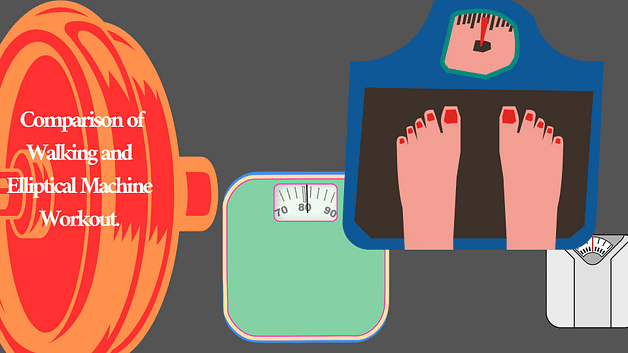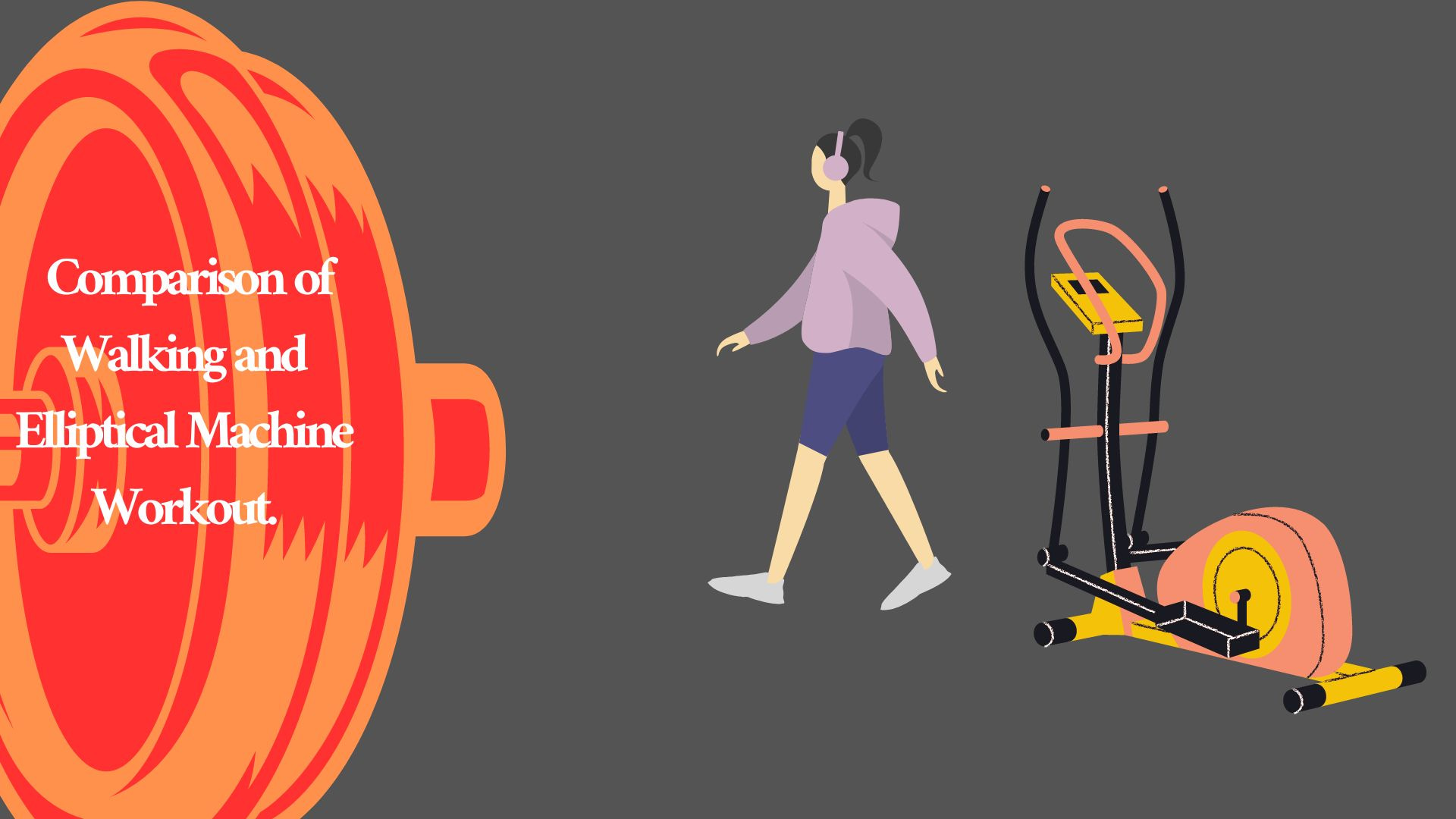Walking and using an elliptical machine are two popular forms of low-impact exercise that can help to improve cardiovascular fitness and overall health.
While both forms of exercise have their benefits, there are some differences in the way they work the muscles and the level of intensity they provide.
In this article, i will explore the differences between walking and using an elliptical machine, and discuss the benefits and drawbacks of each.
Both walking and working out on an elliptical machine can provide effective cardiovascular exercise, but there are some differences to consider including:
-
Impact
-
Intensity
-
Calorie burn
-
Muscles targeted
Ultimately, the choice between walking and using an elliptical machine depends on your fitness goals, physical abilities, and personal preferences. Both activities can provide an effective workout and can be incorporated into a well-rounded exercise routine.
-
Impact
The force or pressure that is placed on your joints and bones during physical activity.
Exercises that involve impact, such as running or jumping, can put stress on your joints, particularly your knees and ankles.
This can be beneficial for strengthening bones and muscles, but it can also increase the risk of injury, especially if done improperly or excessively.
In contrast, low-impact exercises are gentler on your joints and bones, and are often recommended for people with joint pain, arthritis, or other conditions that affect mobility.
Walking, cycling, and using an elliptical machine are examples of low-impact exercises that can still provide an effective cardiovascular workout without putting too much stress on your joints.
It’s important to choose exercises that are appropriate for your fitness level and physical abilities, and to use proper form and technique to avoid injury.
-
Intensity
The level of effort or exertion required during physical activity.
Higher intensity exercise typically involves working harder and faster, and may include activities such as running, jumping, or using high resistance settings on exercise equipment.
Lower intensity exercise generally requires less effort and may include activities such as walking, cycling, or using low resistance settings on exercise equipment.
Intensity is an important factor in determining the effectiveness of your workout. Higher intensity exercise typically burns more calories and can help to improve cardiovascular fitness and endurance.
However, it can also be more challenging and may not be suitable for everyone, especially those with certain health conditions or physical limitations.
Lower intensity exercise, on the other hand, is often more accessible and may be a better option for beginners, older adults, or those with joint pain or other physical limitations.
While it may not burn as many calories as higher intensity exercise, it can still provide health benefits and help to improve fitness over time.
The optimal intensity for your workout will depend on your fitness level, goals, and physical abilities.
It’s important to start gradually and gradually increase the intensity of your workouts over time to avoid injury and ensure that you are challenging yourself appropriately.

-
Calorie burn
The number of calories that your body uses or burns during physical activity. The number of calories burned during exercise can vary widely depending on factors such as the type of activity, the intensity and duration of the exercise, and your individual body composition.
In general, exercises that are more intense or involve more muscle groups tend to burn more calories than those that are less intense or focus on a smaller number of muscles.
For example, running or using an elliptical machine at a high resistance level can burn more calories than walking or cycling at a moderate pace.
However, the number of calories burned during exercise is also influenced by your individual body composition, including factors such as your age, gender, weight, and muscle mass.
People who have more muscle mass tend to burn more calories during exercise, even at rest, because muscle tissue requires more energy to maintain than fat tissue.
It’s important to note that while calorie burn can be a useful metric for tracking the intensity of your workout, it is just one aspect of overall fitness and health.
Other factors such as cardiovascular endurance, strength, flexibility, and balance are also important for maintaining overall fitness and preventing injury.
-
Muscles targeted
The specific muscle groups that are engaged or activated during physical activity. Different types of exercises can target different muscle groups, and the specific muscles that are worked will depend on the movement patterns and body position involved in the activity.
Walking primarily targets the muscles in the lower body, including the glutes, quadriceps, hamstrings, and calves.
The degree to which each muscle group is engaged will depend on factors such as the walking speed, incline, and the individual’s gait pattern.
In contrast, using an elliptical machine can target both the upper and lower body muscles, engaging the arms, chest, back, and core in addition to the lower body muscles.
This is because the movement pattern of an elliptical machine involves a combination of pushing and pulling with the arms, as well as a circular motion with the legs.
The specific muscle groups targeted by an exercise can have important implications for overall fitness and health.
For example, exercises that target the core muscles can help to improve posture and reduce the risk of back pain, while exercises that target the upper body muscles can improve upper body strength and coordination.
It’s important to include a variety of exercises that target different muscle groups in order to achieve overall fitness and prevent muscle imbalances or weaknesses.
Conclusion
Both walking and using an elliptical machine can be effective forms of exercise that provide cardiovascular benefits and improve overall health.
While walking is a low-impact exercise that primarily targets the lower body muscles, using an elliptical machine can provide a more comprehensive full-body workout.
However, the optimal form of exercise will depend on individual fitness goals, physical abilities, and personal preferences.
By understanding the differences between these two forms of exercise, individuals can make informed choices and incorporate them into their fitness routine for optimal results.


